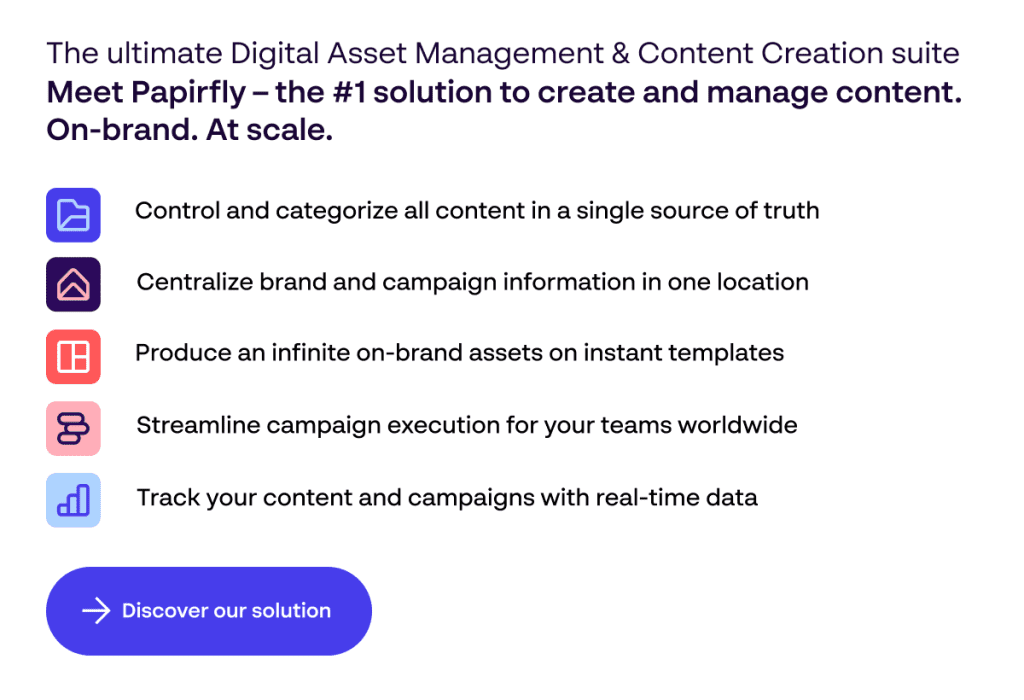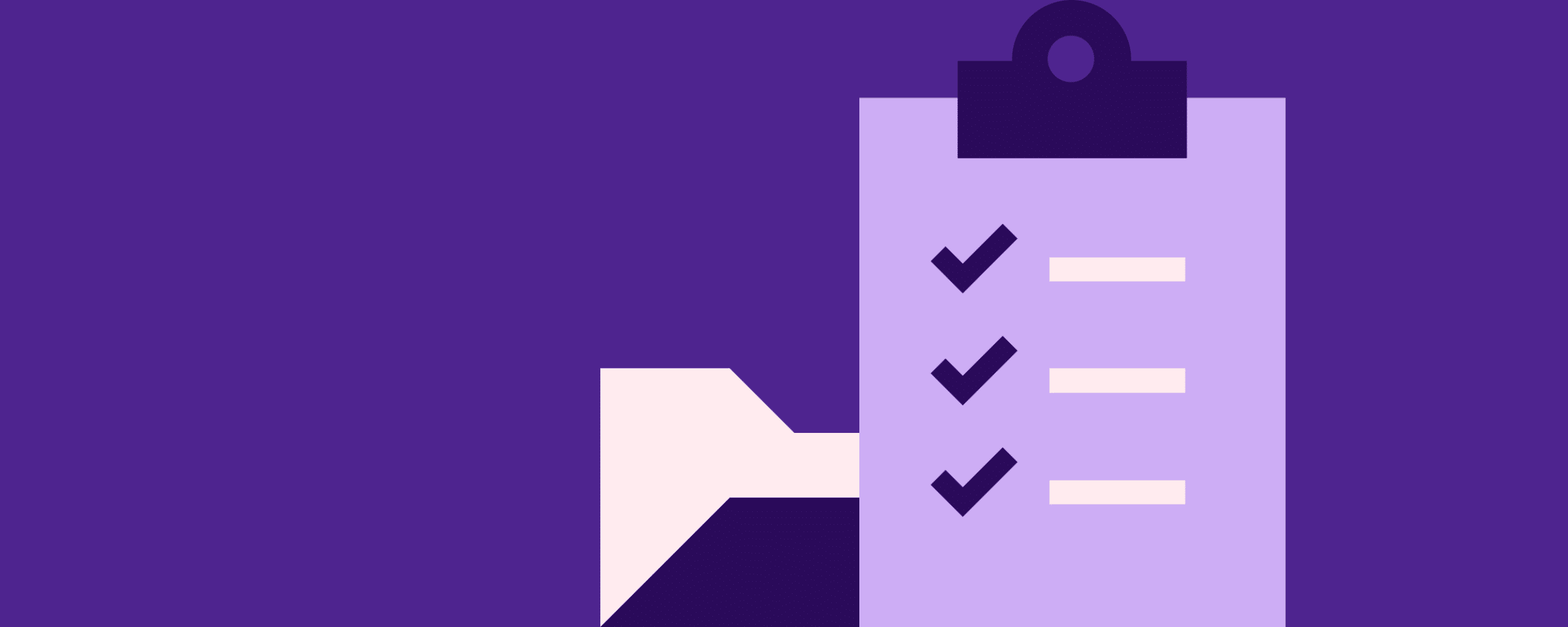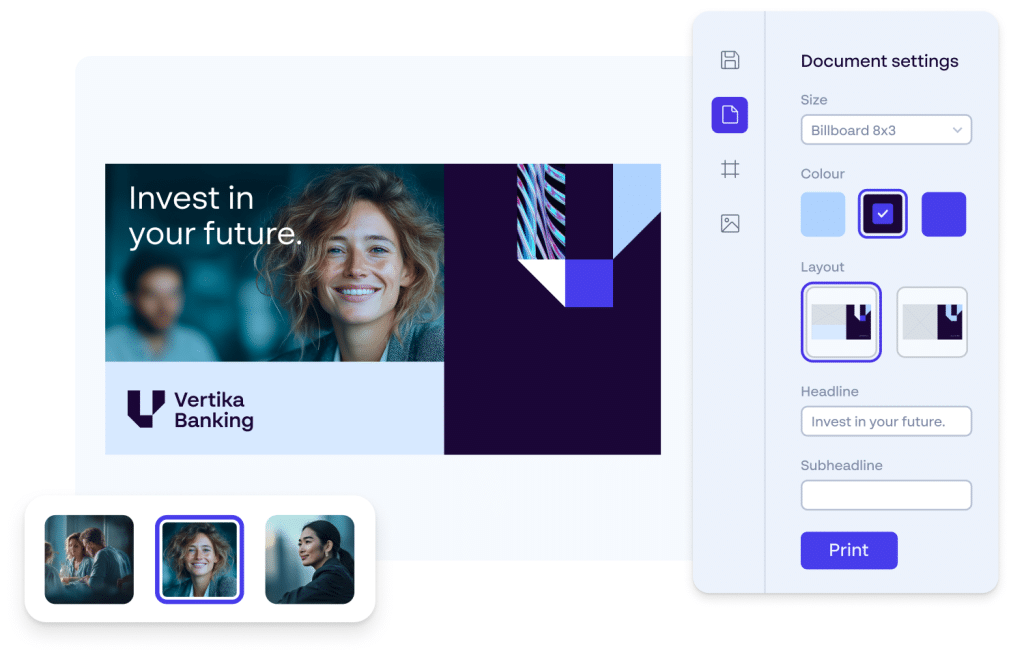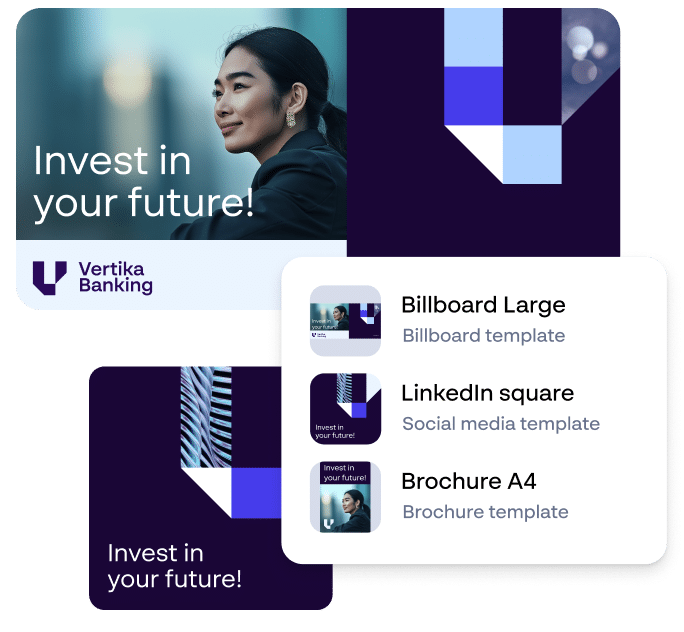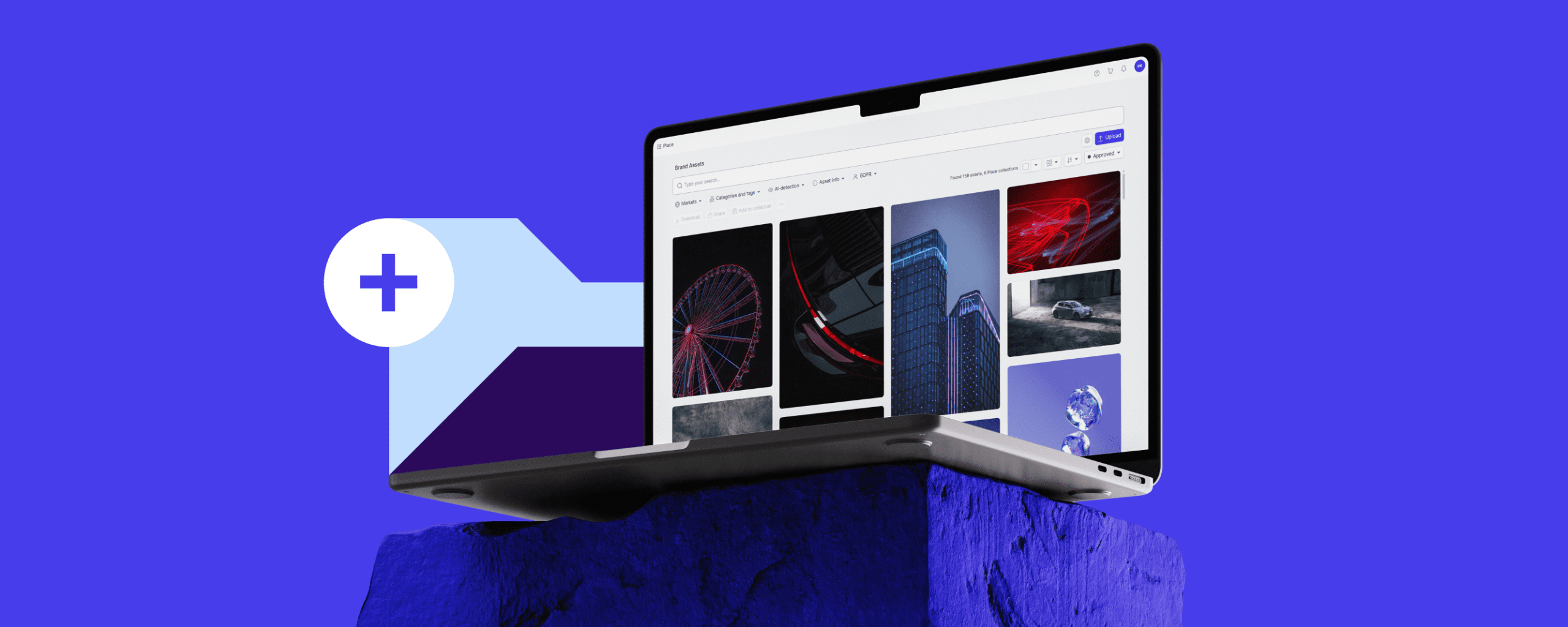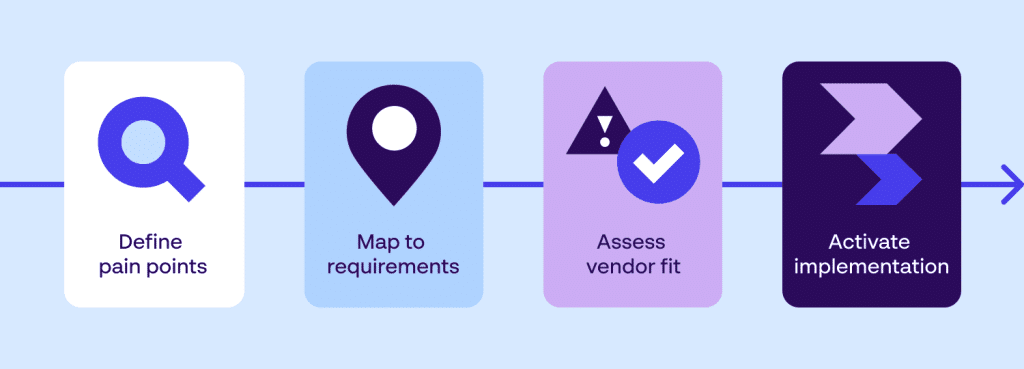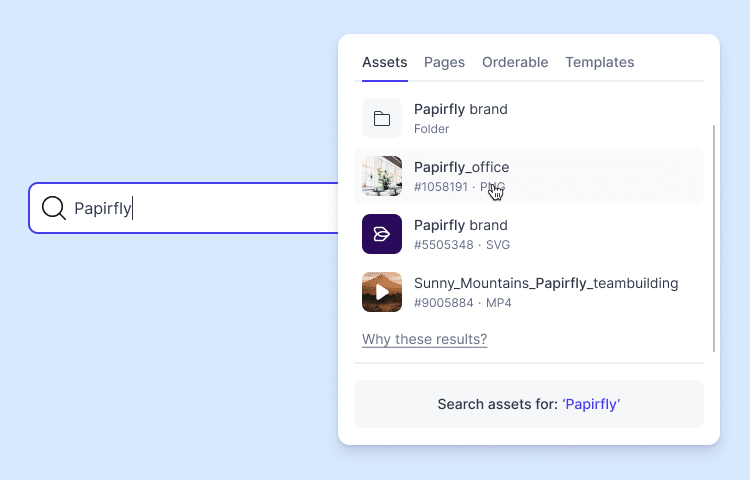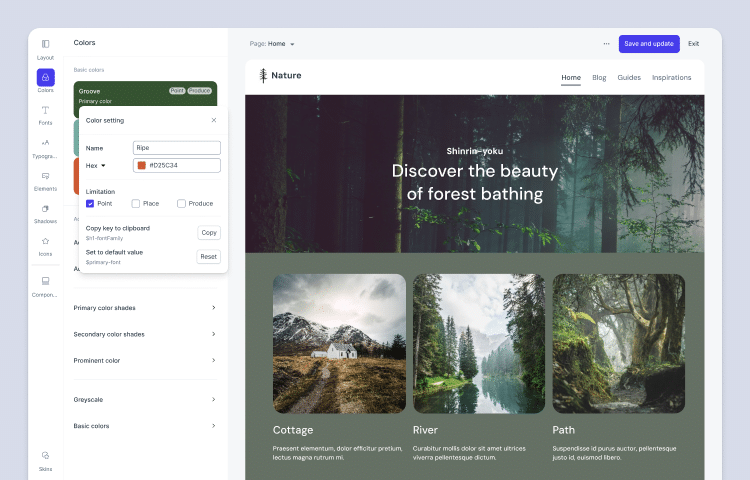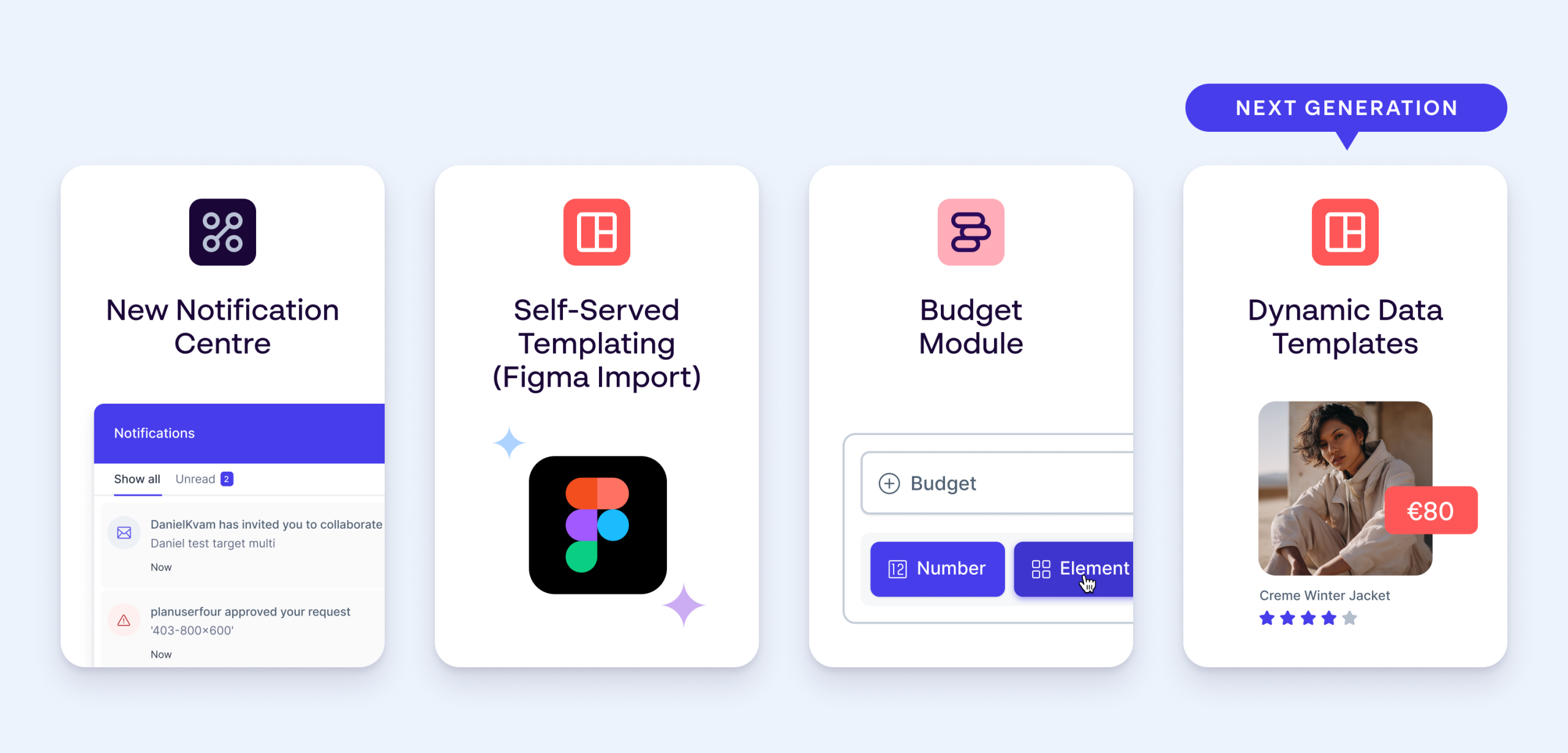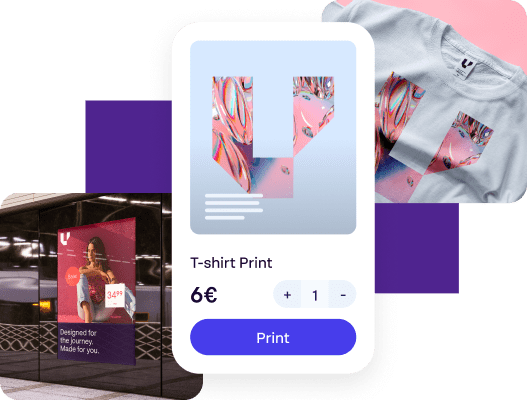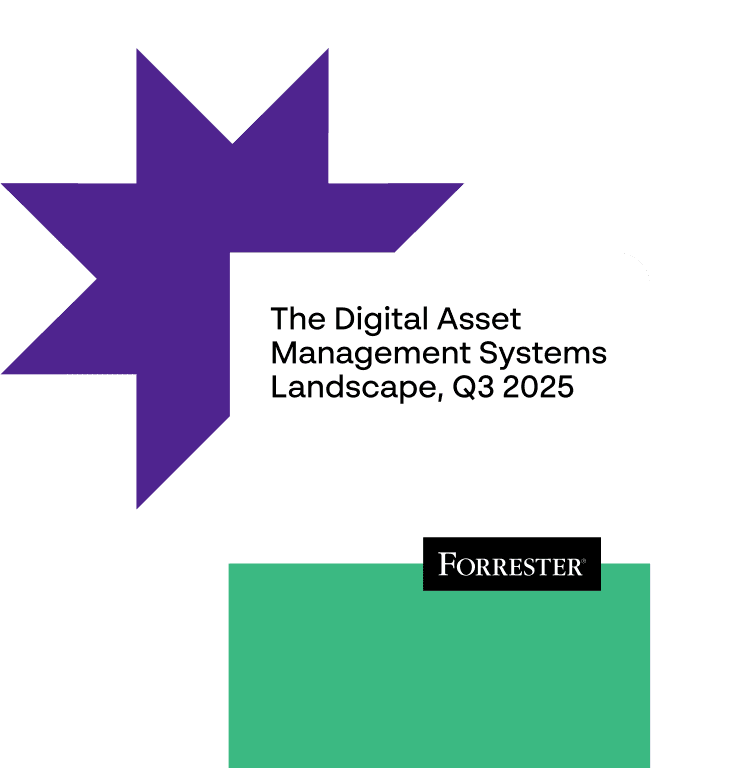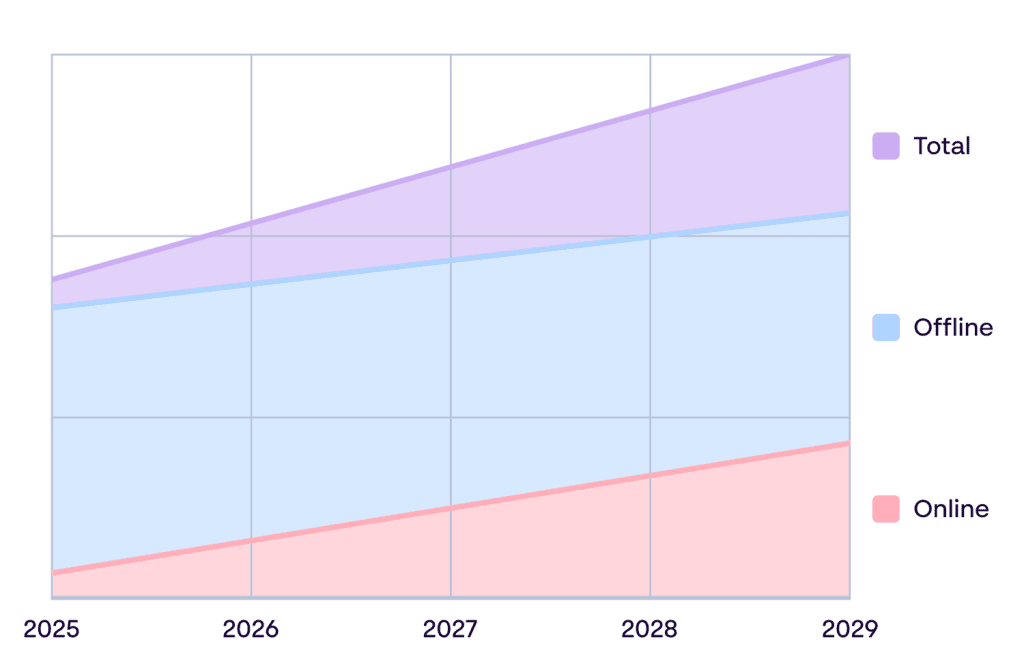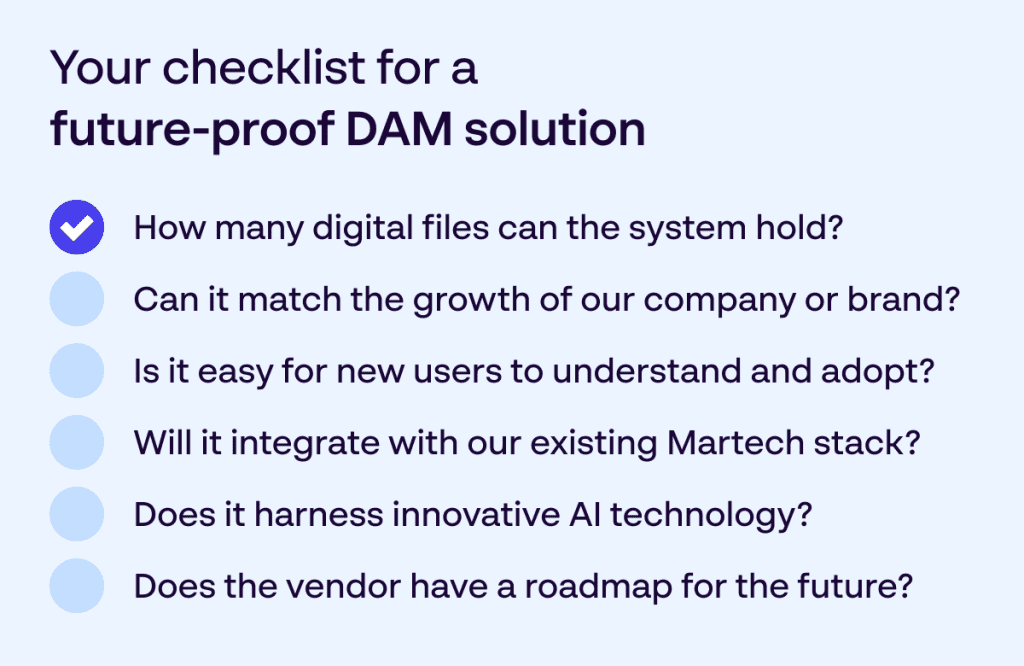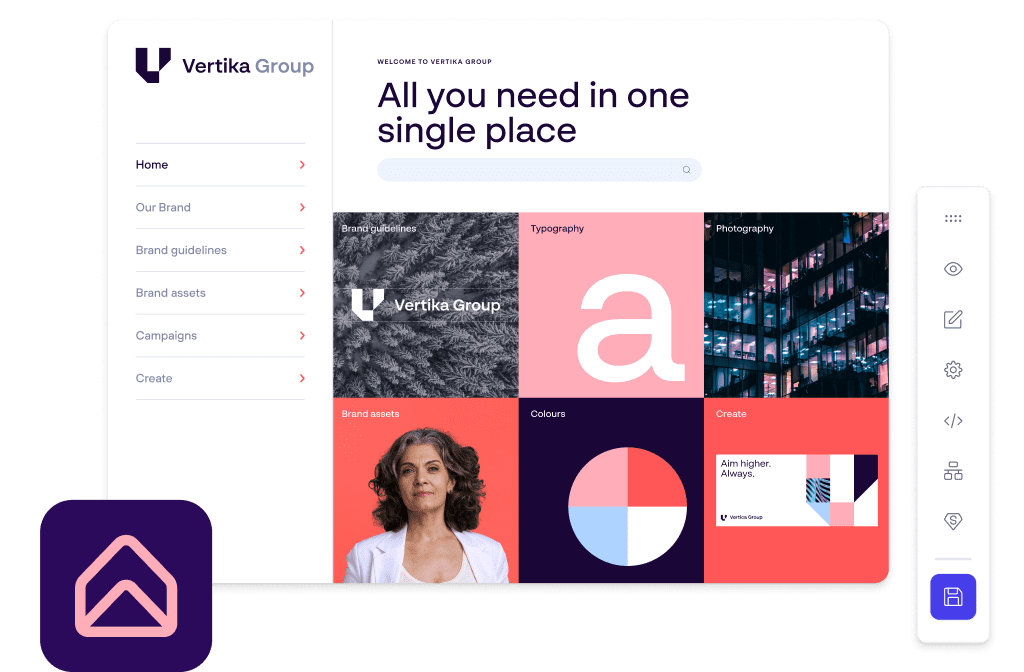This content has been automatically translated and may include minor variations.
Content creation is the lifeblood of modern marketing.
From a consistent cycle of blog posts, emails and social media posts, to powerful one-off videos, landing pages and billboards – great content campaigns are the key to connecting with your audiences worldwide.
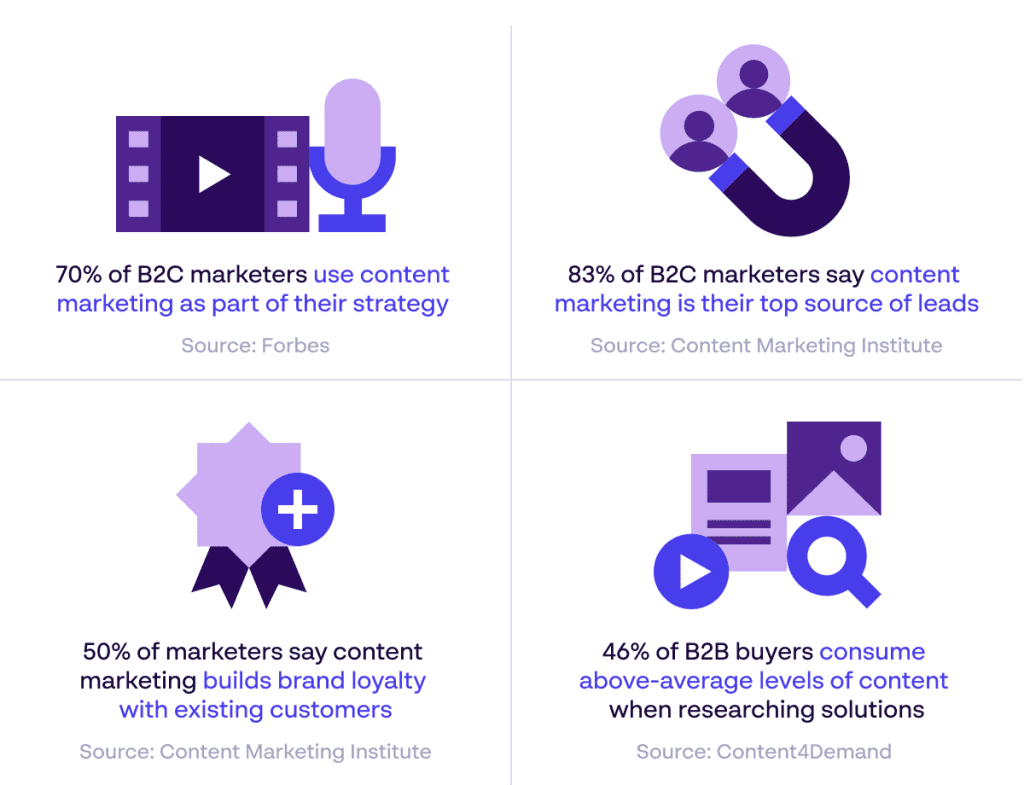
With 97% of professionals saying they experience at least some level of success with content marketing, brands must keep up with growing consumer demands. But this is much easier said than done.
Maintaining a constant flow of content across multiple channels is a prevailing problem for marketing teams. Despite innovations in AI software and automation tools, the struggle persists, placing a lot of demand on creatives, designers and your head office to maintain pace with an ever-growing number of platforms – all in the face of ever-shrinking budgets.
While these everyday challenges may be your responsibility, it is empowering your frontline staff where the key to scaling your outputs to new heights can be found. In fact, it’s right that the people who interact with your customers, manage your outlets, and take care of your day-to-day obligations are able to flow with trends and markets as easily as possible..
Here we’ll explain how, with the right tools, strategies, and incentives, you can empower your frontline employees to become the beating heart of your content marketing efforts.
What do we mean by frontline employees?
First, we should clarify what we mean by “frontline employees”. As noted above, your frontline workers are the people who directly engage with your audiences and keep your operations running smoothly.
As well as traditional marketing roles, they’re the baristas serving customers in your cafe. The shop assistants stacking shelves in your supermarket or department stores. The customer service representatives answering people’s questions and concerns. Simply put, they’re the backbone of your organization.
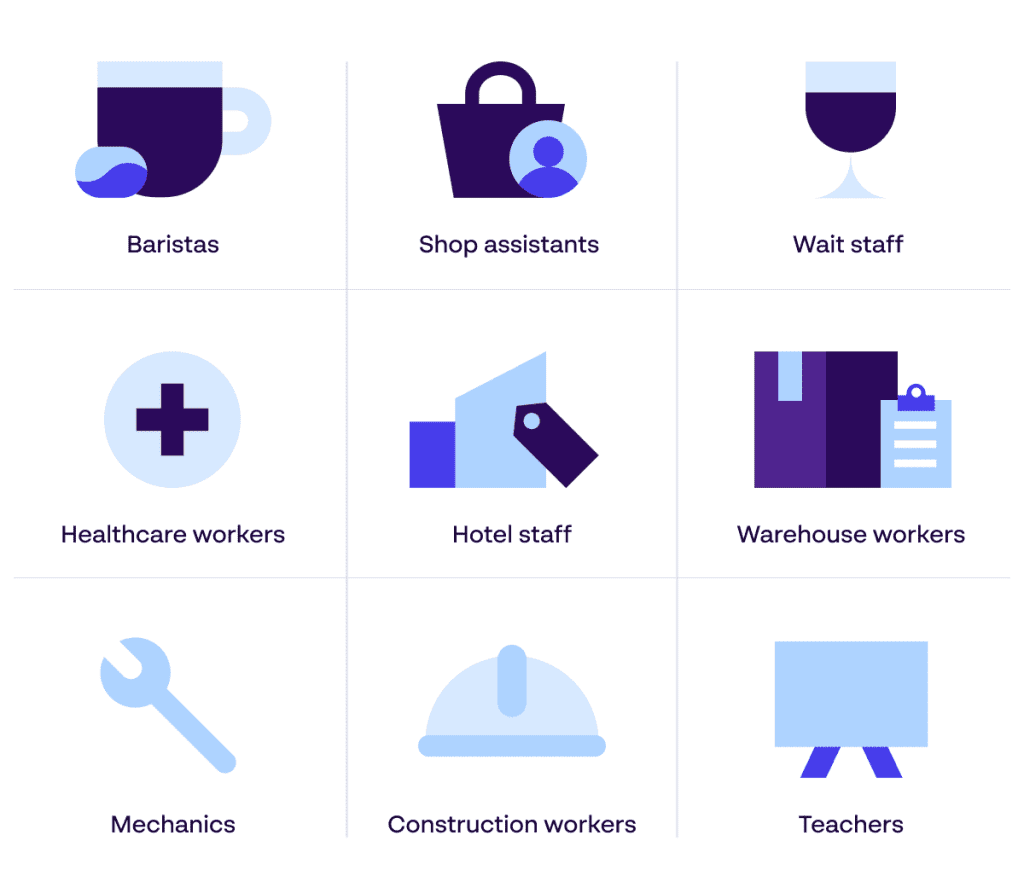
The challenges impacting today’s content marketers
Now, what are the prevailing challenges today’s content marketers face, and which of these could be resolved by a helping hand from your frontline workforce?
Lack of trained personnel
First, there’s the simple problem of demand for content outstripping available resources. With 51% of companies saying they use over 8 channels, many marketing teams need additional personnel to produce and maintain a continuous flow of content on each of their active platforms – especially if they have visions of scaling up in future.
Personalisation and localisation
Beyond the number of channels, global companies also have to consider the pressing need to tailor content for specific audiences and regions. With personalized content now a growing expectation among consumers, this adds another layer of complexity for already burdened content marketers.
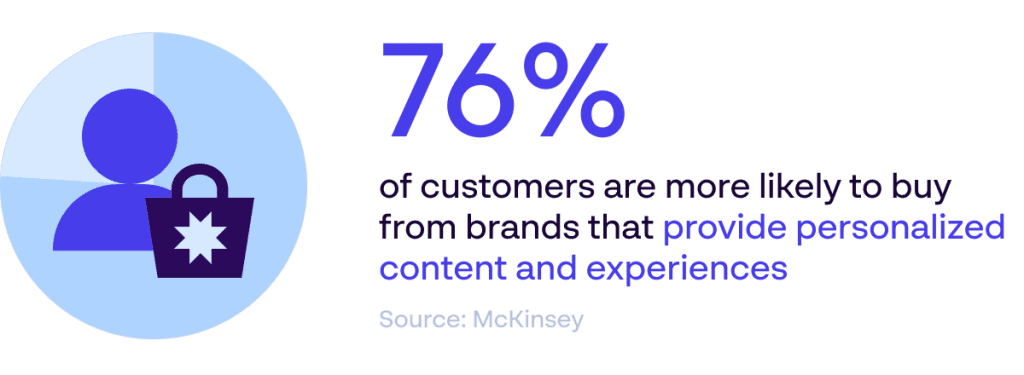
Maintaining brand consistency
Attempting to churn out content at pace can allow inconsistencies to creep in – mistakes which can subsequently damage your image in the eyes of your customers. Brand consistency is critical to a strong reputation and sustainable brand equity – when this falters, it can take a long time to fully recover.
Managing content and campaigns
With multiple marketing campaigns in motion across several locations, maintaining control and oversight of every asset is a time-consuming, painstaking burden. The more time your marketing team devotes to coordinating assets, the less time they can dedicate to evolving your content strategy.
Dependence on designers and agencies
To relieve the burden on the central marketing team, many organizations delegate content creation to freelance designers and specialist agencies. This can reduce the stress involved, but it comes at a cost – and not just a financial one.
Using professionals outside your organization places your content production schedule in their hands, adding complexity to the pipeline and concerns over their capacity to fulfill your needs.
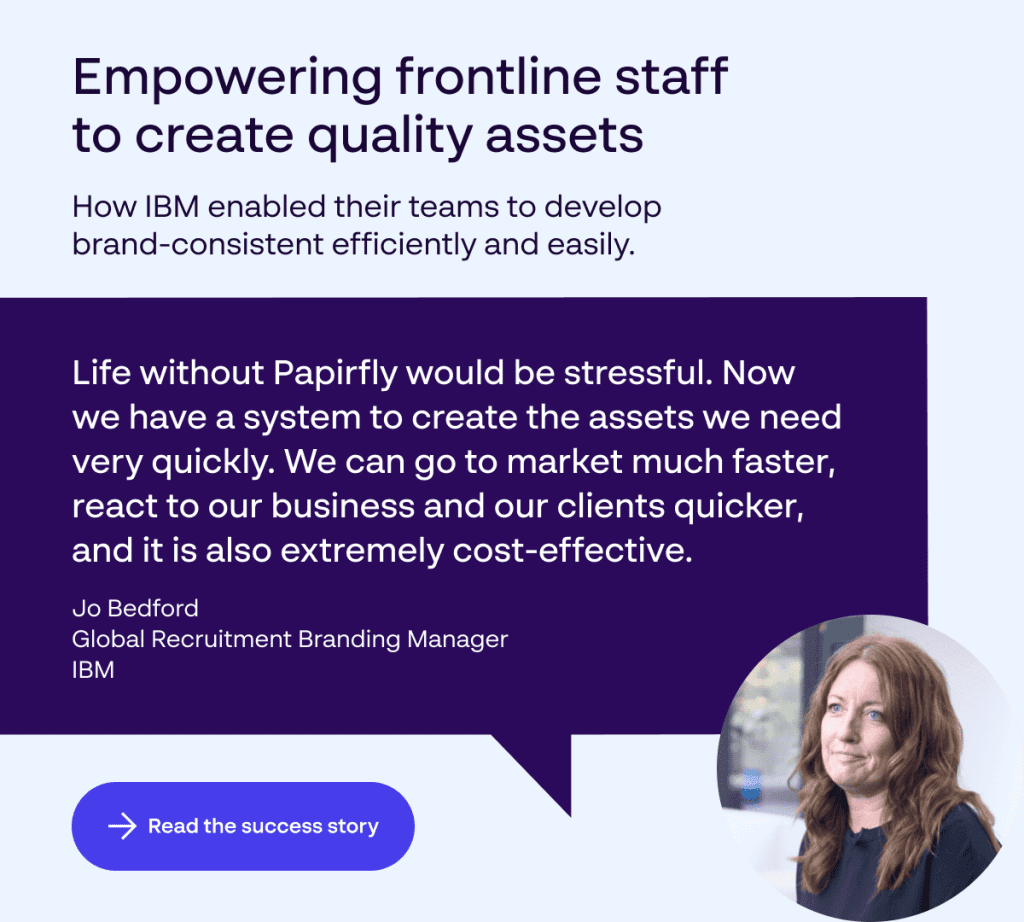
How does empowering your frontline employees address these issues?
A lot of the fundamental issues affecting content marketers could be resolved if there were simply more people who could contribute to your content creation process. People who understand your business, your brand and your customers. So, what better than boosting your frontline employees into this role?
Now if it were as simple as that, every company in the world would already be doing it. If you’re keen to mobilize your frontline workers, there are several hurdles you have to clear first:

Tough obstacles that, with the right combination of tools and some top-line direction from your marketing leaders, can be overcome to make frontline content creation a very real possibility in your organization.
6 steps to enhance your employees’ involvement in your marketing
1. Utilize intelligent design templates
The biggest barriers between your employees and your content are a lack of design expertise and available time. Using on-brand design templates addresses both of these concerns and can instantly inspire your employees to share quality content.
Content creation solutions with this capability provide an intuitive framework for users, fixing all necessary brand elements in place so there is zero risk of inconsistency. From there, your employees then have the freedom to create and adapt materials to their requirements, without compromising your company’s identity.
This can have several practical benefits, such as:
- Enabling anyone to produce high-performing assets, no matter their skill level
- Cutting down asset creation times to a matter of minutes
- Allowing users to tailor languages, imagery and wording to their audience or region
- Permitting the production of content for multiple different channels in one location
By also incorporating safety measures, such as approval workflows and a library of professionally designed content templates, you lay the foundation for an employee-generated content revolution – one that can scale up your in-house marketing and reduce your reliance on freelancers and agencies.

2. Centralise brand guidelines and directives
Your content production tools shouldn’t stop at design templates. While these tools help lock down consistency while reducing production times and costs, it’s just as important that your frontline employees understand your brand inside and out before you allow them to start generating assets.
Your brand guidelines are the crux of this requirement, so it’s essential that they’re accessible to your entire workforce. You might think that this is a given, but while 85% of companies say they have documented guidelines, only 30% enforce them consistently.
Establishing a central, online destination for your brand guidelines and similar resources helps ensure that your frontline staff, wherever they’re based, can engage with and educate themselves on your identity. A brand portal can be a valuable tool in this process, storing this key information in one online place that your teams can access whenever required.
3. Provide education and training
Alongside these capacity-expanding tools, it’s beneficial to introduce designated training sessions with frontline workers who are interested in content creation. Hosted by members of your central marketing team or other executives, regular sessions with your team can help them understand what’s expected and feel more confident engaging in this process.
While on the surface it may seem like trading one time-consuming task for another, it’s all a matter of perspective. What is more time-costly: a monthly training session with your internal teams, or the hours you devote to creating, proofing, amending and distributing content to your outlets worldwide?
Plus, opportunities for learning and development are massive motivators for the latest generation of frontline workers. So not only can this scale up your content development – it may also enhance your overall employee experiences and job satisfaction.
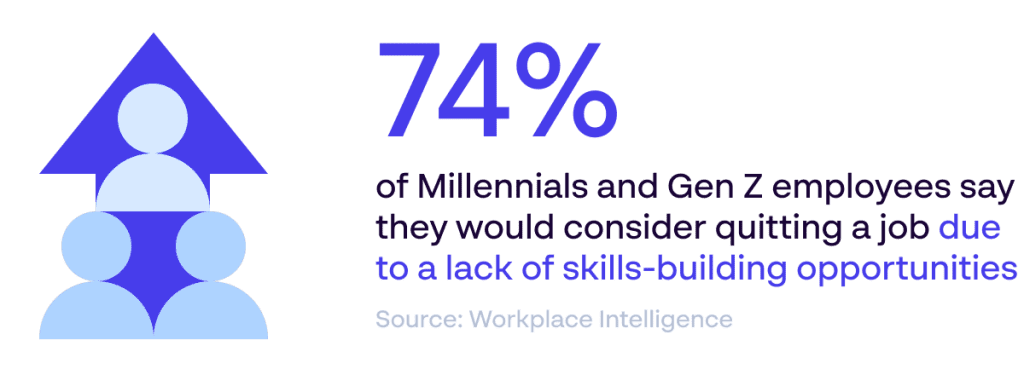
4. Incorporate content creation into your onboarding process
The employee onboarding stage sets the expectations for your new recruits, so they can fully understand your processes and their responsibilities. By introducing your content creation tools and brand management solutions at this early phase, you can help ensure that this is understood and embraced by your newest employees.
This means that by the time they have fully settled into their new role, your content creation process can already be second nature to them. Over time, this can create a culture of content production throughout your frontline workforce, rather than the sole responsibility of your central marketing teams.
5. Create a single source of truth for your content
If your entire frontline staff are engaged in content generation, assets can quickly become muddled, misplaced or lost altogether, adding to your workload instead of streamlining it. Preventing this requires a single, centralized repository for assets developed across your organization – a Digital Asset Management (DAM) system.
Investing in a DAM solution allows you to consolidate all your branded content, assets, imagery, videos and beyond into one combined library – accessible to your teams across the globe. With the ability to tag assets, set permissions and distribute these to your outlets worldwide in real time, a DAM can put you in total control over the consistency and frequency of your content.
If you want to learn more about DAM, check out our ultimate guide to Digital Asset Management.
6. Establish an employee recognition and rewards programme
Finally, encouraging your employees to play a more conscious role in your marketing operations through tangible incentives can help ensure that this is not an on-again, off-again occurrence, but a fixed, reliable approach.
While each employee will have their own unique motivations to get involved in such a scheme, some examples to help inspire your staff include:
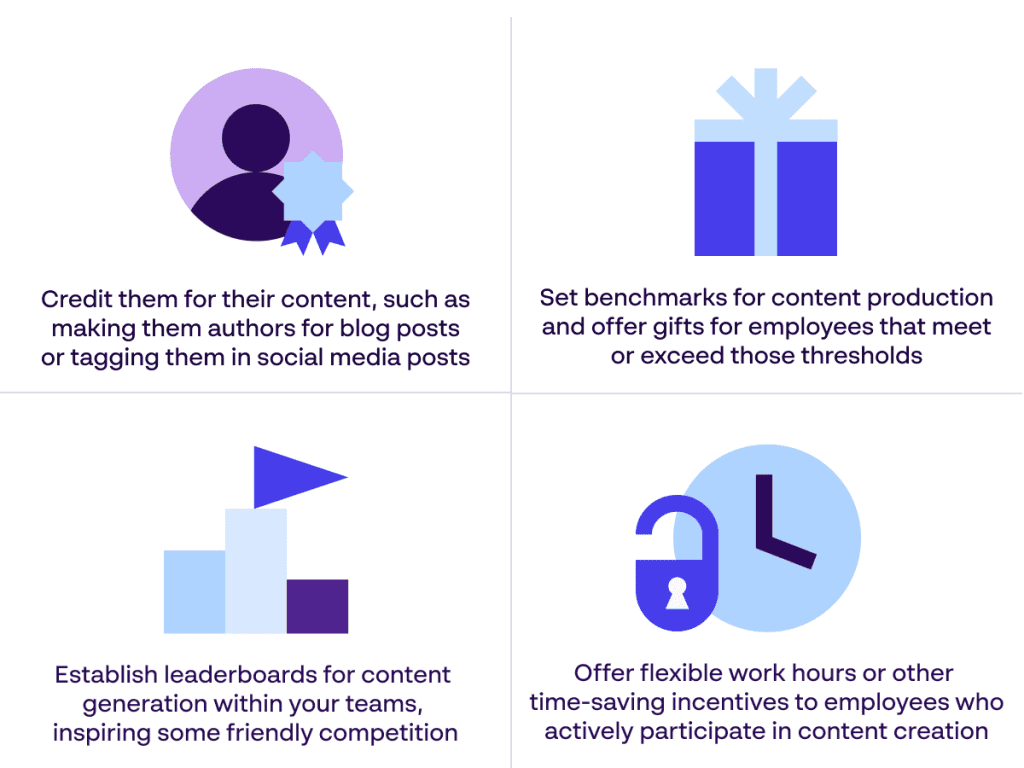
Reap the rewards of empowering your frontline workers
Empowering your frontline employees to be at the core of your content creation efforts is not straightforward. But by following the techniques above and investing in the tools and training required to execute this, you open the doors to a whole host of benefits:
Scaled-up content output: With more hands available, your teams can create more content than ever, with increased productivity and better cost-efficiency.
Greater consistency: As work is created in-house by professionals who know your brand, consistency can be locked down on every channel and location.
Extended reach: Scaling up your content generation means you can build a bigger presence on new and existing channels, and tailor content to specific regions and audiences.
Faster times to market: Turnaround times for content can be cut significantly, and employees are enabled to capitalize on fleeting opportunities to capture sales.
More engaged employees: By getting involved in your content generation, your employees can forge stronger, more meaningful bonds with your brand.
Capacity for strategic thinking: With the pressure of content generation eased, your marketing team will have more room to plan, reflect and evolve your brand.
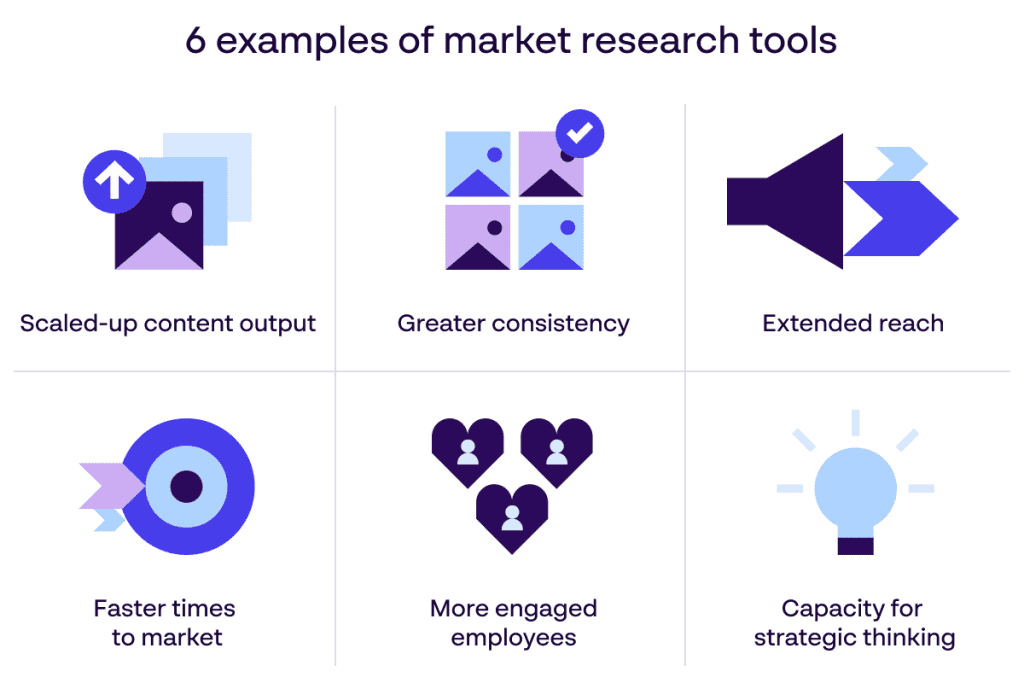
Empowering your frontline employees to create collateral takes time to perfect, but with every piece of content your teams produce, the closer you come to a state of marketing self-sufficiency.
We hope this has given you the motivation to see where you can scale up your content creation in the long term, and harness your professionals at every level of your organization to make a positive impact on the future of your brand.
